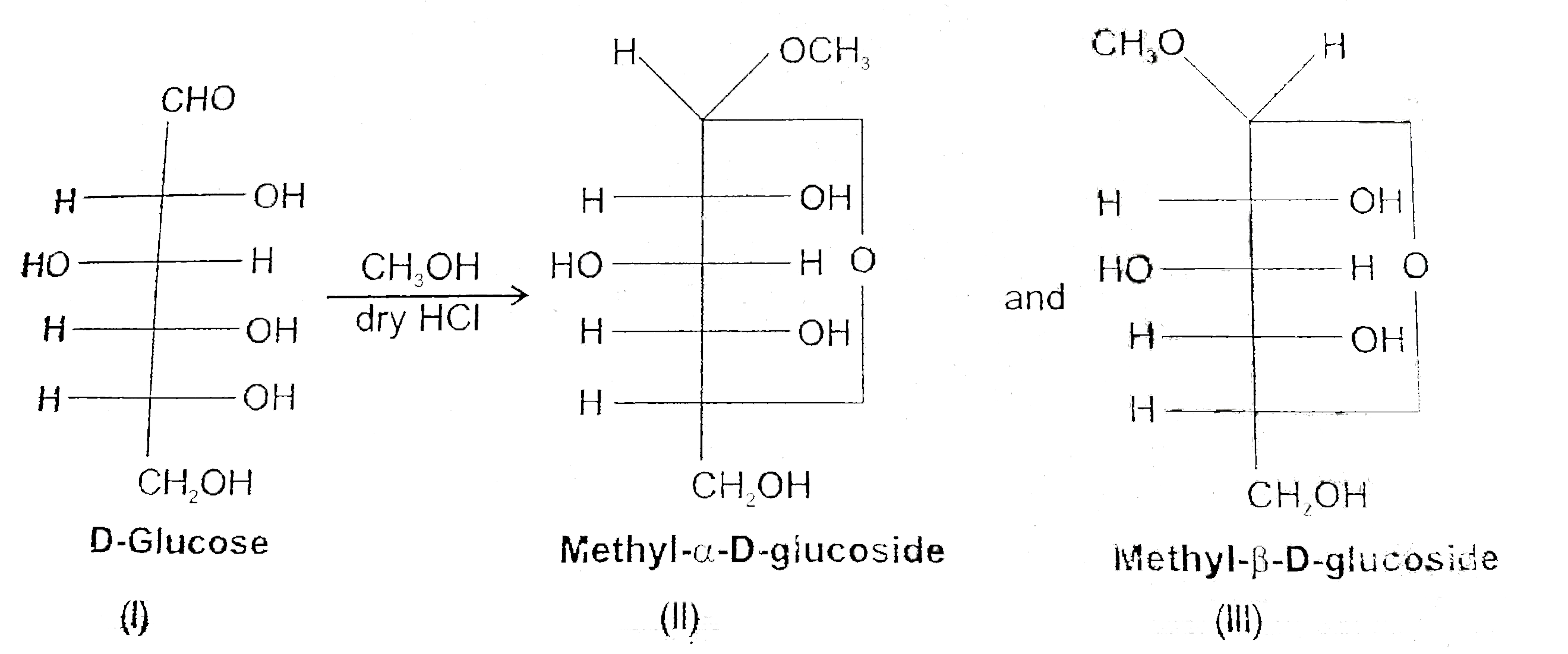D-glucose, on treating with methanol in presence of dry HCl gives methyl glucosides according to the following reaction.

Mention true (T) and False from the following statements
S1: The glucosides do not reduce fehling's solution
S2: The glucosides do not react with hydrogen cyanide or hydroxylamine
S3: Behaviour of glucosides as stated in S1 and S2 indicates the absence of free −CHO group
S4: The two forms of glucosides are enantiomers.
A
TTFF
B
FTTT
C
TTTF
D
TFTF
Video Solution
Text Solution
The correct Answer is:C
S1,S2 and S3 are true but S4 is False because the glycosides are non-super impossible non-mirror images hence they are diastereomers.
|
Topper's Solved these Questions
- BIOMOLECULESBook:RESONANCEChapter:BIOMOLECULESExercise:Ex-1(sec-B)Part-II
Explore 5 Videos
- BIOMOLECULESBook:RESONANCEChapter:BIOMOLECULESExercise:Ex-1(sec-C)Part-II
Explore 8 Videos
- BIOMOLECULESBook:RESONANCEChapter:BIOMOLECULESExercise:Ex-1(sec-C)Part-I
Explore 5 Videos
- BASIC CONCEPTSBook:RESONANCEChapter:BASIC CONCEPTSExercise:ORGANIC CHEMISTRY(BASIC CONCEPTS)
Explore 27 Videos
- BIOMOLECULES & POLYMERBook:RESONANCEChapter:BIOMOLECULES & POLYMERExercise:ORGANIC CHEMISTRY(Biomolecules & Polymer)
Explore 33 Videos
Similar Questions
Knowledge Check
Fehling’s solution –B is-
ANH4OHBCu(OH)2CCuODCu2OWhich of the following statements is FALSE about SN1 mechanism ?
AIt is a first order reaction.BIt is favoured by higher concentration of the nucloephilic reagent.CIt involves the formation of an intermediate.DIt results into racemisation.For an SN2 reaction which of the following statements are true:-
AThe rate of reaction is independent of the concentration of the nucleophileBThe nucleophile attacks the C-atom on the side of the molecule opposite to the group being displacedCThe reaction proceeds with simultaneous bond formation and ruptureDNone of these
Unlike glucose, neither α nor β-methyl glucoside reduces Tollens' reagent or Fehling solution. Why?
View SolutionWhich of the following is not true for SN1 reaction ?
View SolutionWhich of the following is not true for SN1 reaction ?
View SolutionIn SN1 reaction which of the following is TRUE?
View SolutionFind the correct statements regarding the methyl glucosides obtained by the reaction of D-Glucose with methanol in presence of dry HCI gas.
View Solution

